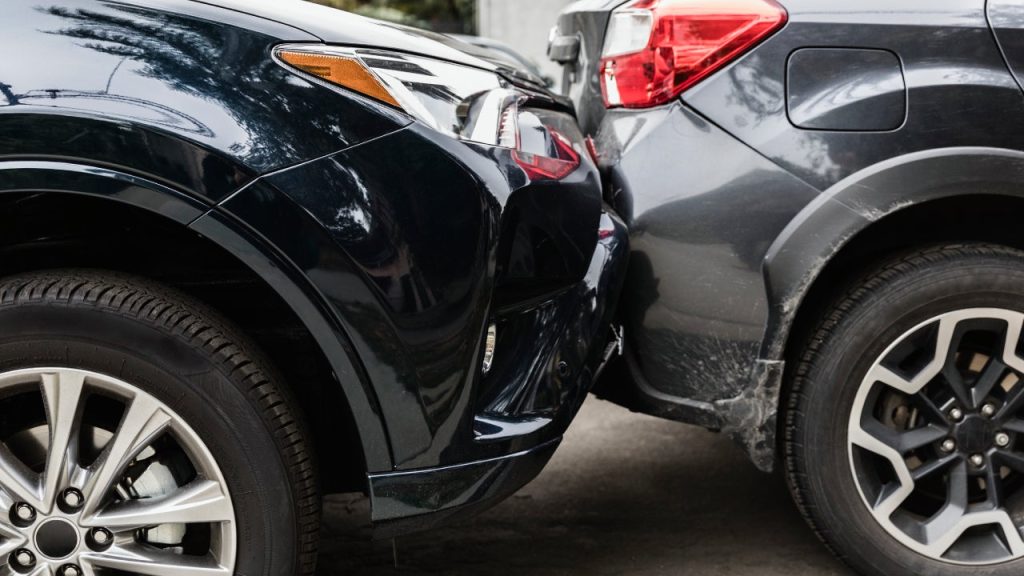Key takeaways
- Federal Bureau of Investigations (FBI) reports show that insurance fraud may account for $400 to $700 in higher insurance premiums. (FBI)
- Common types of insurance scams include roofing and contracting scams, ghost brokers and staged auto accidents.
- To protect yourself from insurance scams, it is important to understand your insurance policy and be aware of potential red flags.
“Don’t worry, ma’am,” says the fresh-faced young man at my doorstep. “We have a special program that gets your insurance company to approve a new roof, and you won’t have to pay for a thing.”
I realized two things that morning. First, no one should call me ma’am before my second cup of coffee. And second, insurance scams can happen anytime — even on my porch at 9:30 on a random Tuesday morning.
I knew that the time to shell out for a new roof was fast approaching. With the cost of building materials still shockingly high, the latest quotes I received were $27,000 for an asphalt shingle roof and $67,000 for a metal one. Without taking out a personal loan or a HELOC, many homeowners can’t afford major home maintenance projects like this, and roofing contractors know that.
With over 15 years of experience as an insurance agent, I am well aware that insurance scams and legal system abuse exist. But now that I am a homeowner, I have a different perspective. If I didn’t understand insurance as well as I do, would I have fallen prey to the door-to-door roof salesman?
It did rain a few weeks ago, and there could be more damage now. Having the insurance company foot the whole bill would be amazing. And yes, I would love for him to handle the whole claim on my behalf! Unfortunately, I’m fully aware that’s not how the situation would play out.
Americans have been walking a financial tightrope for the past few years, and between inflation and rising auto and home insurance rates, many of us could use a lucky break. A free roof is tempting… but nothing is free — especially if it involves insurance. If it sounds too good to be true, it’s probably fraud.
What is insurance fraud?
The basic definition of fraud is when deception is used for personal gain or to cause harm to others. In the insurance world, fraud refers to intentional deceit or false representation to an insurance company with the aim of receiving compensation or causing or increasing the risk of loss. The word intentional is critical; without intent, the act can be classified as misrepresentation (an unintentional misstatement of facts).
According to the Coalition Against Insurance Fraud, fraudulent insurance claims increase during times of high inflation and economic hardship. It’s not just policyholders looking for a financial break. Almost everyone within and adjacent to the insurance industry was — and for the most part, still is — feeling the squeeze of tighter margins.
Why does insurance fraud matter?
As the saying goes, there’s no such thing as a victimless crime. In a 2017 Senate subcommittee hearing on consumer protection, product safety, insurance and data security, Senator Jerry Moran shared FBI reports showing that insurance fraud costs between $80 to $100 billion per year across all lines of insurance and about 10 percent of property and casualty claims are fraudulent. All told, fraud may cost American families between $400 and $700 per year in higher insurance rates.
Common types of homeowners insurance scams
A misconception about insurance scams is that fraud is only committed by policyholders. This isn’t true. Fraud can be committed by anyone, such as brokers, agents, claimants, lawyers, adjusters, builders and contractors, which brings us back to the roofers on my porch.
Contractor and roofing scams
Among the most prevalent types of home insurance fraud are roofing and contracting scams. Contractors have extensive knowledge of construction, roofing products and the insurance claim process, which gives them a significant advantage over homeowners.
Many scams start off as a simple door-to-door sales pitch and an offer to submit a claim for your roof to your insurance carrier on your behalf. However, if the damage isn’t from a covered peril and the insurance company denies the claim, you are on the hook to pay the roofer for the work. Keep in mind that while sudden wind and hail damage is usually covered by most HO-3 insurance policies, wear and tear is not.
Here are some red flags to look for when approached by a roofing company or contractor and how they can lead to insurance fraud.
Shows up at your home without an appointment
When a natural disaster hits, licensed roofers and contractors get booked quickly. Unlicensed contractors tend to go door to door looking for homeowners who can’t wait weeks or months for the repairs on their homes to start. However, your home insurance company will usually only release the final claim payment after they have documentation that the work has been completed. Work from an unlicensed roofer or contractor will not be covered.
Offers to waive the deductible
When roofers or contractors offer to waive the home insurance deductible, that difference is usually added to the claim amount. Falsifying records and inflating claim amounts is considered fraudulent billing and goes against your policy contract.
Requires a large down payment
It is common for contractors to require a down payment before work begins, especially if there is extensive damage. However, asking for a homeowner to pay for a project in full or for more than 50 percent of the work is not typical. This request is a major red flag that the contractor may be a scam artist.
Ghost brokers and fake insurance companies
Homeowners and drivers living in hard-to-insure areas need to be on the lookout for ghost brokers, spoofed carrier websites and other types of insurance fraud. Ghost brokers are fake insurance companies that use altered contracts and forms from legitimate insurers to sell policies to customers. Many policyholders don’t know that their insurance isn’t valid until it’s time to file a claim. Another way ghost brokers scam policyholders is by purchasing legitimate insurance policies for customers but canceling the coverage and keeping the premium payments.
Spoofed carrier websites
Homeowners living in disaster-prone areas are more likely to become roped into litigation and legal system abuse by third-party litigation firms using tech and AI. By using techniques like keyword stuffing and cloaking, opportunists use search engine optimization tactics to target policyholders looking to file disaster claims. Instead of finding the claims information for their actual insurance carrier, a spoofed insurance company website comes up as the top search result. Some policyholders click and unknowingly “file a claim” through the spoofed site, which directs the information they’ve input to a law firm, not their insurance company. This can cause massive delays in claims and reductions in payouts once the litigation firms are paid.
Common types of auto insurance scams
Car insurance fraud is a nationwide concern that can cost unsuspecting policyholders thousands of dollars in higher car insurance rates and surprise fees — or even put their lives at risk. Some car insurance scams, such as staged car crashes, are apparent and dangerous. Others are much harder to identify. Understanding when insurance fraud can occur and what it may look like can put you in a stronger position to take appropriate action.
Staged auto accidents
A staged auto accident is when another driver intentionally causes or fakes a car crash in order to claim injuries and receive a hefty payout from an insurance company. These schemes can involve multiple cars, passengers and staged eyewitnesses to back up the accusation that you caused an accident.
One popular scam is the “swoop and squat,” where two cars work together to force you into rear-ending the vehicle that is “squatting.” To help potential victims understand what situations to be aware of while on the road, the National Insurance Crime Bureau (NICB) created videos of simulated staged car accidents.
Towing scams
As if having a breakdown on the side of the road isn’t bad enough, drivers also need to be aware of towing scams. Some tow truck companies, also known as bandit tow trucks, will tow your vehicle to their repair facility for an agreed-upon price. However, when you arrive to pay the bill and collect your car, the bill includes extra fees that you did not agree to, and they won’t release your car until it is paid.
How to protect yourself from insurance scams
Looking for new ways to beat the system isn’t new and insurance scams evolve over time.
“I recently spoke with claims department heads across the U.S.,” says Todd Kozikowski, CEO and founder of 4WARN, a data analytics and risk assessment firm focused on mitigating hyperlitigation in the insurance industry. “They noted that the trend of pushing for full roof replacements — something that originated in Florida — is now spreading nationwide. Where only partial repairs would have sufficed before, full replacements are becoming the norm.”
To avoid getting roped into an insurance scam, you need to be proactive and aware of how and when situations may occur.
- Understand your auto and home insurance policies: One of the best actions you can take is to read the fine print of your policy to understand what you are and are not covered for. Ask questions to fill in any knowledge gaps. If you have never filed a claim before, ask your agent what the process would be like so that you will notice if something seems off.
- Contact the National Association of Insurance Commissioners (NAIC): With digital insurance carriers and brokers becoming the norm over brick-and-mortar agents, it can be hard to know if an insurer is legitimate. By asking the insurance company for its NAIC number and verifying it with your state’s insurance commissioner, you can feel more confident about its legitimacy.
- Save your insurance carrier’s information on your phone: Whether you are filing a home or auto claim, it is better to go directly through your insurance company’s website, app or phone number. Avoid using links, forms or phone numbers found during a spur-of-the-moment web search. With cybersecurity and AI fakes becoming a growing concern, you may not notice if you are on a spoofed site or your carrier’s. Spoofed sites can sell your information to any number of bad actors or to third-party litigation firms looking to drum up legal disputes. This could not only delay your claim, but you might also end up getting less once the litigators take their cut.
- Document everything: In both auto and home claims, the burden of proof is shifting more to policyholders. From creating a home inventory checklist to installing dashboard cameras to combat staged car crashes, documentation is a policyholder’s best friend. It can help keep legitimate claims on track and combat false claims against your policy.
- Take a moment to think it through: Most of the time, policyholders are under significant stress when filing a claim. You will need to sign a lot of paperwork, and you may need to speak with various people from your insurance company, along with mechanics or builders. While you don’t want to hold your claim up, you also don’t want to agree to everything presented to you out of panic and fear. Take a beat, and ask questions until you are comfortable — or at least have a better understanding of the situation.
How to report insurance fraud
If you are a victim of insurance fraud, contact your insurance company to make them aware of the situation. Provide your carrier with any documentation you have to support your case. Additionally, you can report fraud to the NAIC, NICB or your local FBI office.
Frequently asked questions
Read the full article here
















